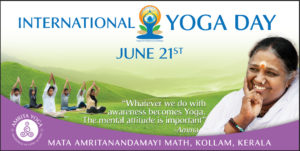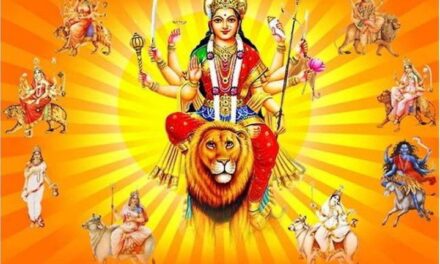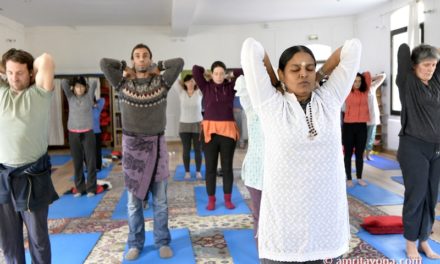International Day of Yoga – Sunday, 21st June 2015
“Buddhiyukto jahaateeha ubhe sukruta dushkrute
Tasmaadyogaaya yujyasva yogah karmasu kaushalam!”
– (BHAGAVAD GITA– CHAPTER 2, Verse 50)
“One who is equipped with equanimity in this life discards both merit and sin. Therefore, remain established in yoga; yoga results in perfect action.”
How It Started
The United Nations has called for the observance of International Day of Yoga on 21st June 2015. The UN declaration came after the call for adoption of this day by our Prime Minister Shri. Narendra Modi in his UN General Assembly address on 27th September 2014. Shri. Modi stressed upon the need for yoga as a holistic approach to creating harmony between man and nature, and to overall health and wellbeing. Subsequently, the event began to be organized with the support of all major yoga lineages. On the occasion, the government is organizing Yoga Day events across 192 member countries of the United Nations. The Prime Minister also launched a website dedicated to the day.
The IDY Logo
Ideally captioned ‘Yoga for Harmony & Peace’, the logo is symbolically designed. The folded hands symbolize the union of the individual consciousness with the universal consciousness; the rest of the image is symbolic of the five elements matter is made up of: the green leaves represent nature, the brown leaves, the earth, the blue symbolizes water, while the bright tone stands for fire and the sun symbolizes energy and inspiration gained through the practice of Yoga. Indeed, Yoga can be looked upon as a feasible solution to international strife, and as a means to bring about harmony and peace among the nations of the world.
Different Practices
In the Bhagavad Gita, Lord Krishna enunciates the four-fold path of Yoga; these are: Jnana Yoga, Bhakti Yoga, Karma Yoga, and Raja Yoga.
Yoga has been popularly defined as “union with the divine”. Raja Yoga is one of the six schools of dharmic (astika) Hindu philosophy. Its principal text is the Yoga Sutras of Patanjali. In the context of Hindu philosophy, Rāja Yoga is known simply as Yoga. The term is a retronym, introduced in the 19th century by Swami Vivekananda. Raja yoga is the royal path of meditation. As a king maintains control over his kingdom, so can we maintain control over our own “kingdom”—the vast territory of the mind. In Raja yoga we use our mental powers to realize the Atman through the process of psychological control. Because raja yoga is the path of meditation, it is generally followed by those who lead contemplative lives.
Meditation is one of the most misunderstood concepts of spiritual life. Fortunately, for us, we have great living masters who provide us with tailor-made guidance based on their own experience.
AMRITA YOGA
Sri Mata Amritanandamayi Devi or Amma, as her ardent followers call her, has devised unique techniques of yoga and meditation that adapt our ancient scriptures to the demands of present-day life. In the MA-OM meditation, Amma leads everyone to meditate on the ingoing and outgoing breath, coupled with the syllables, MA and OM, respectively.
IAM Technique is a yogasana + meditation infused practice.
Amrita Yoga is an integrated hatha yoga practice designed to expand our awareness, gain equanimity of mind and refine our power of concentration. Amrita Yoga provides the highest standard of technical training in hatha yoga with mindful breathing and the use of mantras.
This holistic yoga practice is aimed at developing inner strength, expansion of mind and awareness in action. It attempts to connect us to our inner being and true essence.
Celebrating the International Yoga Day on 21st June, Mata Amritanandamayi Maths across the world have organized a community program to impart the technique of Amrita Yoga so that the benefits of yoga reach one and all. It is hoped that this day of ‘yoga’ heralds the much-needed for harmony and peace in this strife-torn world.
Author: Shakti




